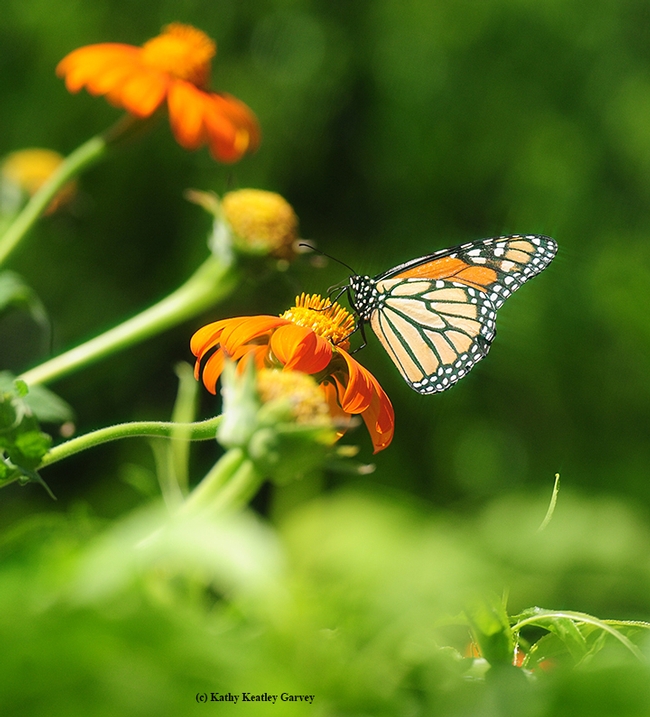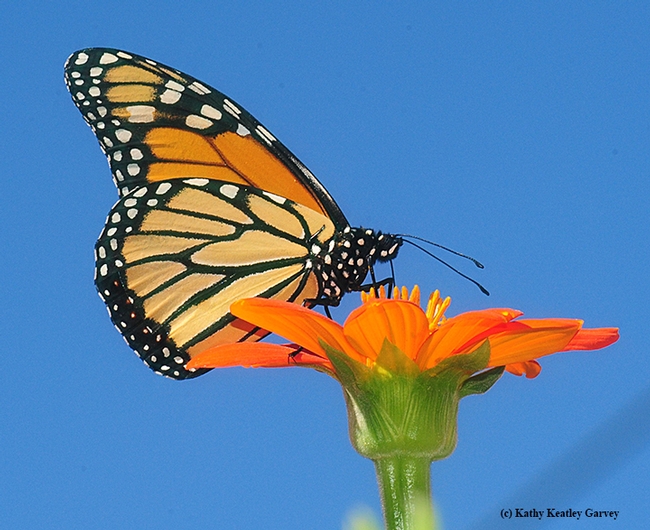Oh, the joy of rearing monarchs...from an egg to a caterpillar to a chrysalis to an adult...
However, the ultimate joy is not in rearing them, but releasing them--from their confined and well-protected indoor habitat to that Spectacular Spacious World Without Boundaries. Some soar majestically 80 feet into the air, never looking back. Some decline to leave your hand and just cling there on your finger. And some leave your hands only to hang around the yard for five hours. Hey, do I have to go? Can't I just stay awhile?
It's been said that in Nature, 97 percent of monarch eggs don't reach adulthood. Or, to put it another way, the survival rate is 3 percent. Conservation, even on a mini-scale (we've reared and released 22 this year) is what it's all about.
Another joy is this: documenting them as they fly off or nectar on nearby flowers. Monarchs may live from minutes to hours to several weeks, depending on predators, diseases, deformities, food supply and migratory mishaps. Some live several months as they overwinter along coastal California and in Central Mexico.
Speaking of life span, we were rather surprised that a video of a monarch being released--and then eaten by a diving bird--emerged as one of three $100,000 America's Funniest Videos. Funniest? Not funny. True, that's what birds do, and do well, but the humor escapes many of us. It was more of an "Oh, No!" moment.
On a more pleasant note, it's good to see an increasing number of citizen scientists planting milkweed. They know that milkweed is the host plant of monarchs; that monarchs will lay their eggs only on milkweed; and caterpillars will eat only milkweed. No milkweed. No monarchs.
For more information on monarchs (Danaus plexippus) and planting milkweed, check out the wealth of information on the Xerces Society's monarch website. And read the news release by the Xerces Society's Emma Pelton on the 74 percent decline in the monarch in the number of monarch butterflies overwintering in coastal California.
Attached Images:

This newly eclosed female monarch just wants to linger. (Photo by Kathy Keatley Garvey)

A newly released monarch nectaring on a Mexican sunflower (Tithonia) next to a bird house, a replica of a barn. (Photo by Kathy Keatley Garvey)

A monarch butterfly has its choice of Mexican sunflowers (Tithonia). (Photo by Kathy Keatley Garvey)

Close-up of a newly released monarch nectaring on a Mexican sunflower (Tithonia). (Photo by Kathy Keatley Garvey)